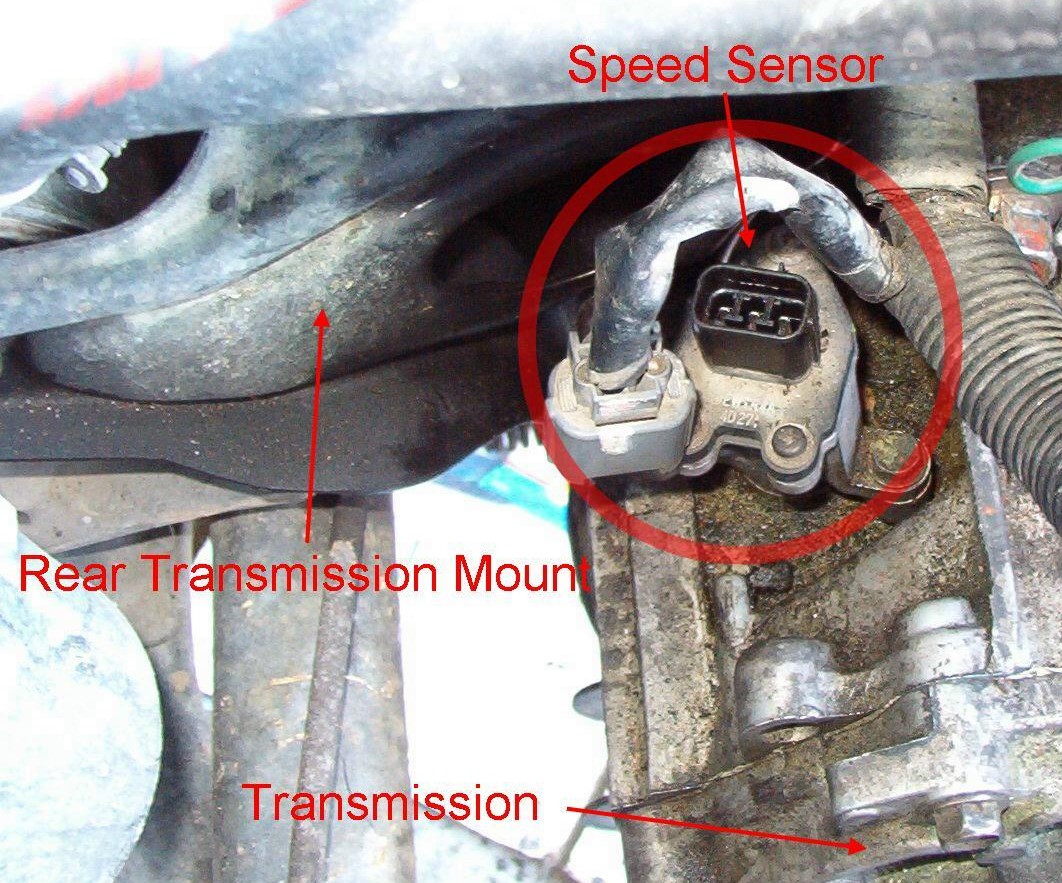Have you ever wondered how your car knows how fast it's going? Well, one of the unsung heroes behind that crucial information is the output speed sensor. It may sound fancy, but it's actually a relatively simple yet essential component in your vehicle.
A speed sensor is a device that counts the number of revolutions or distance traveled per unit of time. The modules then use the information to determine the functionality of various output devices.The output speed sensor, also known as the vehicle speed sensor or transmission speed sensor, is responsible for measuring the rotational speed of the output shaft in a vehicle's transmission system. In simpler terms, it tells your car how fast it's moving.
You might be thinking, "Why should I care about the output speed sensor?" Well, for starters, it plays a crucial role in various aspects of your vehicle's performance. It not only helps the transmission system operate smoothly but also enables other key systems, such as the engine control unit, to make important calculations. Without a properly functioning output speed sensor, your car wouldn't be able to accurately shift gears, resulting in poor acceleration and fuel efficiency. Additionally, it provides vital input for your vehicle's speedometer, cruise control, and even the ABS system. So, it's safe to say that this little sensor is pretty important for the overall functioning of your car.

When it comes to the vehicle transmission system, the output speed sensor is like the eyes and ears of the operation. It monitors the speed of the output shaft, which is connected to the wheels, and sends this information to the engine control unit. This data helps the transmission system determine when to shift gears for optimal performance and fuel efficiency. Apart from its critical role in the transmission system, the output speed sensor serves a few more important functions. First and foremost, it provides input for your vehicle's speedometer, giving you an accurate reading of your speed. It also enables cruise control, allowing you to maintain a constant speed on long drives without constantly pressing the accelerator.
Additionally, the output speed sensor contributes to the operation of the anti-lock braking system (ABS). By monitoring the rotational speed of the wheels, it helps prevent wheel lock-up during sudden braking, ensuring you maintain control of your vehicle even in emergency situations. The sensor consists of a small magnet and a coil of wire. As the output shaft rotates, it creates a magnetic field that induces an electrical signal in the wire coil. When the electrical signal is generated, it is sent to the engine control unit, which interprets the frequency of the signal to determine the rotational speed of the output shaft. This information is then used by various systems, such as the transmission and ABS, to make necessary adjustments and calculations. It's fascinating to think that such a simple mechanism can provide crucial data that keeps your car running smoothly.
A speed sensor, according to the Society of Automotive Engineers (SAE), is a device that counts the number of revolutions or distance traveled per unit of time.

How can I tell if my output speed sensor is faulty?
The output speed sensor can exhibit various warning signs when it is faulty. Some common indicators include erratic or incorrect speedometer readings, transmission shifting issues, and the illumination of the check engine light. If you notice any of these signs, it is advisable to have your vehicle inspected by a qualified mechanic to diagnose and address the problem.
Can a faulty output speed sensor affect fuel economy?
Yes, a faulty output speed sensor can have an impact on fuel economy. The sensor provides crucial data to the vehicle's control module, which helps determine the optimal gear shifts for efficient performance. If the output speed sensor is not functioning properly, it can lead to improper gear shifting, resulting in increased fuel consumption. Therefore, timely replacement or repair of a faulty output speed sensor can contribute to improved fuel efficiency.
Is it possible to repair a faulty output speed sensor, or does it need to be replaced?
In some cases, a faulty output speed sensor can be repaired, especially if the issue is minor or related to wiring or connections. However, in many instances, replacing the faulty sensor is the recommended course of action. It is crucial to consult with a qualified mechanic or technician to diagnose the exact problem and determine whether repair or replacement is the most appropriate solution.
If you are encountering challenges with your output speed sensor, fear not, as Hillside Auto Repair is here to provide its expert assistance! Our highly trained and skilled mechanics possess the necessary knowledge and proficiency to effectively diagnose and resolve any issues pertaining to your vehicle's speed sensor. We understand the potential stress and inconvenience that vehicular problems can bring about, but we guarantee that we are fully committed to supporting you through it. At Hillside Auto Repair, our primary objective is to deliver impeccable automotive solutions in a prompt and efficient manner, while prioritizing clear and open communication with our customers. Allow us to alleviate your concerns; please do not hesitate to reach out to us today, and we will be delighted to assist you by scheduling an appointment!